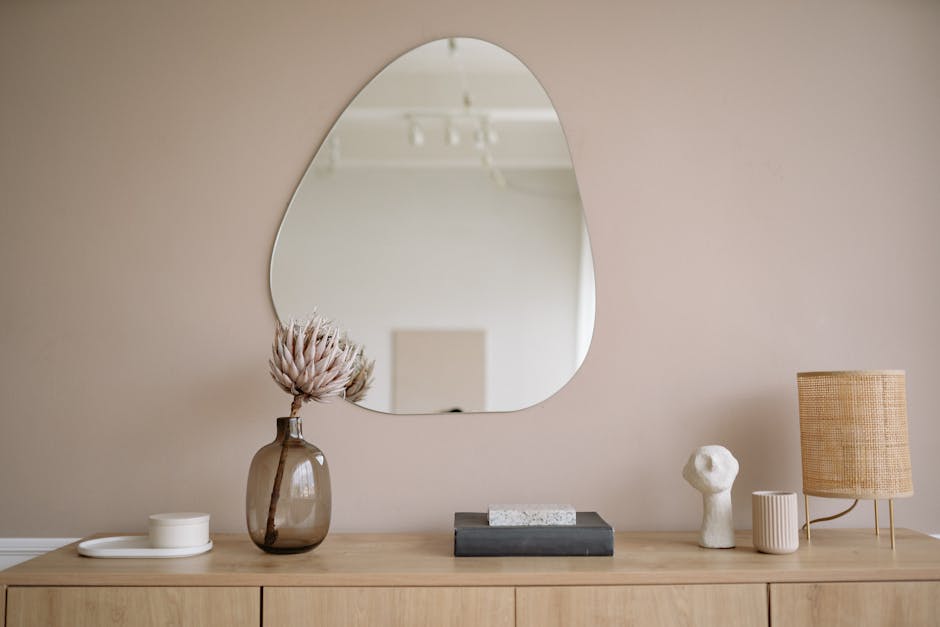Creating Balance in Your Home Decor
Ever walked into a room and felt instantly relaxed? Or, on the flip side, felt a bit overwhelmed? That feeling often comes down to balance in home decor. Finding the right mix of colors, shapes, and textures can make all the difference. Lets explore how to create that perfect balance in your home.
What Does Balance Mean in Home Decor?

Balance in home decor refers to how elements in a space work together. It’s about creating harmony. Think of it like a seesaw; both sides need to be even for it to work well. When your decor feels balanced, it’s more inviting and comfortable.
Balance can be visual or physical. Visual balance is how things look together. Physical balance is about how items are arranged in a room. Both types are crucial for a well-decorated space.
Why is Balance Important?

Creating balance in your home has many benefits:
- Comfort: A balanced room feels cozy and inviting.
- Aesthetic Appeal: Balanced decor is pleasing to the eye.
- Functionality: Properly arranged spaces make daily activities easier.
Research shows that people feel happier in balanced environments. According to a study by the University of Minnesota, balanced spaces can reduce stress levels. Who wouldn’t want that?
How Can You Achieve Balance?

Now that we know what balance is, let’s dive into how to achieve it. Here are some simple tips to follow.
1. Use the Rule of Thirds
The rule of thirds is a photography principle that can work wonders in decor. Imagine dividing your space into three equal parts, both horizontally and vertically. Place your focal points along these lines or where they intersect. This creates a natural flow and balance.
For example, if you have a large sofa, pair it with two side tables. This setup divides the space evenly and keeps it from feeling cluttered.
2. Mix Different Heights
Incorporating different heights adds visual interest. Use tall plants or lamps next to low furniture like coffee tables. This contrast creates balance and keeps your room from looking flat.
Try these ideas:
- Layering: Stack books on a table, then place a lamp on top.
- Variations: Choose floor lamps, table lamps, and wall sconces.
3. Balance Colors and Patterns
Colors and patterns can make or break the balance in your home. Too many bold patterns can overwhelm a space. Instead, mix different patterns with neutral colors to create a cohesive look.
For example, if you have a patterned rug, use solid-colored furniture. Then, add a few decorative pillows with a subtle pattern. This technique keeps it interesting without being chaotic.
4. Symmetry vs. Asymmetry: what’s the Difference?
Symmetry means both sides of a room mirror each other. Asymmetry is more about balance through variety. Both styles can achieve balance; it just depends on your preference.
Use symmetry for a formal look. For example, place two identical chairs on each side of a fireplace. If you prefer an asymmetrical approach, mix different chairs and tables. Keep the overall feel balanced by using similar colors or materials.
What About Texture? How Does it Fit In?

Texture adds depth to your decor, making a room feel dynamic. Combine smooth, shiny surfaces with rough, matte ones. This contrast creates interest and can help balance a space.
Some texture ideas include:
- Fabrics: Use a mix of linens, wools, and velvets.
- Materials: Incorporate wood, metal, and glass.
For instance, pair a shiny glass coffee table with a soft, plush rug. This contrast brings warmth and balance to your space.
How Can You Personalize Your Space?
Personal touches can add character to your decor. Use art, photographs, or souvenirs from your travels. Just make sure they fit the overall balance of your room.
Here’s how:
- Gallery Walls: Create a balanced gallery wall with various frames but stick to a color theme.
- Collectibles: Display items on shelves, ensuring they vary in height and size.
Common Mistakes to Avoid
Even seasoned decorators can make mistakes. Here are a few common pitfalls to steer clear of:
- Overcrowding: Too many pieces can make a room feel cramped. Less is often more.
- Ignoring Scale: Ensure furniture scales well with room size. A massive sofa in a small room looks off.
- Unbalanced Color Schemes: Avoid using all dark colors or all light colors. A mix creates balance.
How to Assess Balance in Your Space?
Take a step back and look at your room. Ask yourself these questions:
- Do I feel comfortable here?
- Are there areas that look cluttered?
- Is there a focal point that draws the eye?
If something feels off, don’t hesitate to rearrange. Sometimes a small change can make a big difference!
Conclusion: Your Action Plan for Balance
Creating balance in your home decor is all about harmony and flow. Start by using simple techniques like the rule of thirds and mixing heights. don’t forget to play with colors and textures to keep your space lively.
As you embark on this journey, remember that balance is personal. What feels balanced to you might not feel the same to someone else. Trust your instincts and have fun!
For more tips on home decor, check out this fantastic resource on [Better Homes & Gardens](https://www.bhg.com/home-improvement/interior/). Happy decorating!



